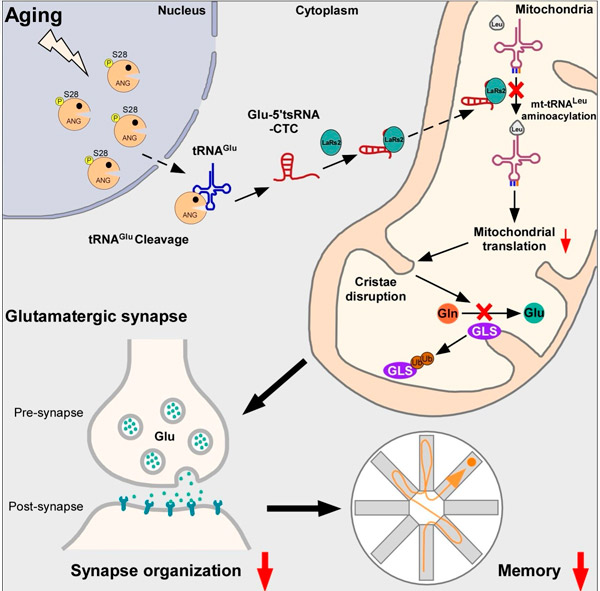Study reveals key role of glutamate tRNA fragments in brain aging and Alzheimer's disease
Last reviewed: 14.06.2024

All iLive content is medically reviewed or fact checked to ensure as much factual accuracy as possible.
We have strict sourcing guidelines and only link to reputable media sites, academic research institutions and, whenever possible, medically peer reviewed studies. Note that the numbers in parentheses ([1], [2], etc.) are clickable links to these studies.
If you feel that any of our content is inaccurate, out-of-date, or otherwise questionable, please select it and press Ctrl + Enter.

A research article published in the journal of Cell Metabolism by Professor Liu Qiang's team from the University of Science and Technology of China (USTC) reveals the critical role of glutamate tRNA fragments in brain aging and Alzheimer's disease.
The study revealed age-related accumulation of Glu-5'tsRNA-CTC, a small transfer RNA (tsRNA)-derived RNA that is generated from the nuclear-encoded tRNAGlu in the mitochondria of glutaminergic neurons. This abnormal accumulation disrupts mitochondrial protein translation and cristae structure, which ultimately accelerates the pathological processes of brain aging and Alzheimer's disease.
Brain aging is an inevitable natural process that leads to a decline in cognitive function. Alzheimer's disease, a neurodegenerative condition, is the most common cause of dementia in older adults, in which cognitive impairment is a prominent feature. Mitochondria provide cells with energy. Research has shown that mitochondrial dysfunction is closely linked to brain aging and Alzheimer's disease.
Mitochondrial Glu-5'tsRNA-CTC disrupts the binding of mt-tRNALeu and leucyl-tRNA synthetase 2 (LARS2), impairing mt-tRNALeu aminoacylation and translation of mitochondrial-encoded proteins. Defects in mitochondrial translation disrupt cristae architecture, leading to impaired glutaminase (GLS)-dependent glutamine production and decreased synaptic glutamate levels. In addition, reducing Glu-5'tsRNA-CTC levels may protect the aging brain from age-related defects in mitochondrial cristae, glutamine metabolism, synapse structure, and memory.

Schematic representation of the regulatory mechanisms of tRNA fragments in brain aging and Alzheimer's disease. LIU Qiang et al.
Liu and his team have shed light on the important role of glutamate tRNA fragments in brain aging and Alzheimer's disease, suggesting new approaches to slow cognitive decline. The researchers developed antisense oligonucleotides that targeted these tRNA fragments and injected them into the brains of old mice. This intervention significantly alleviated learning and memory problems in aged mice.
In addition to elucidating the physiological role of normal mitochondrial cristae ultrastructure in maintaining glutamate levels, this study also identified the pathological role of transfer RNAs in brain aging and age-related memory decline.
